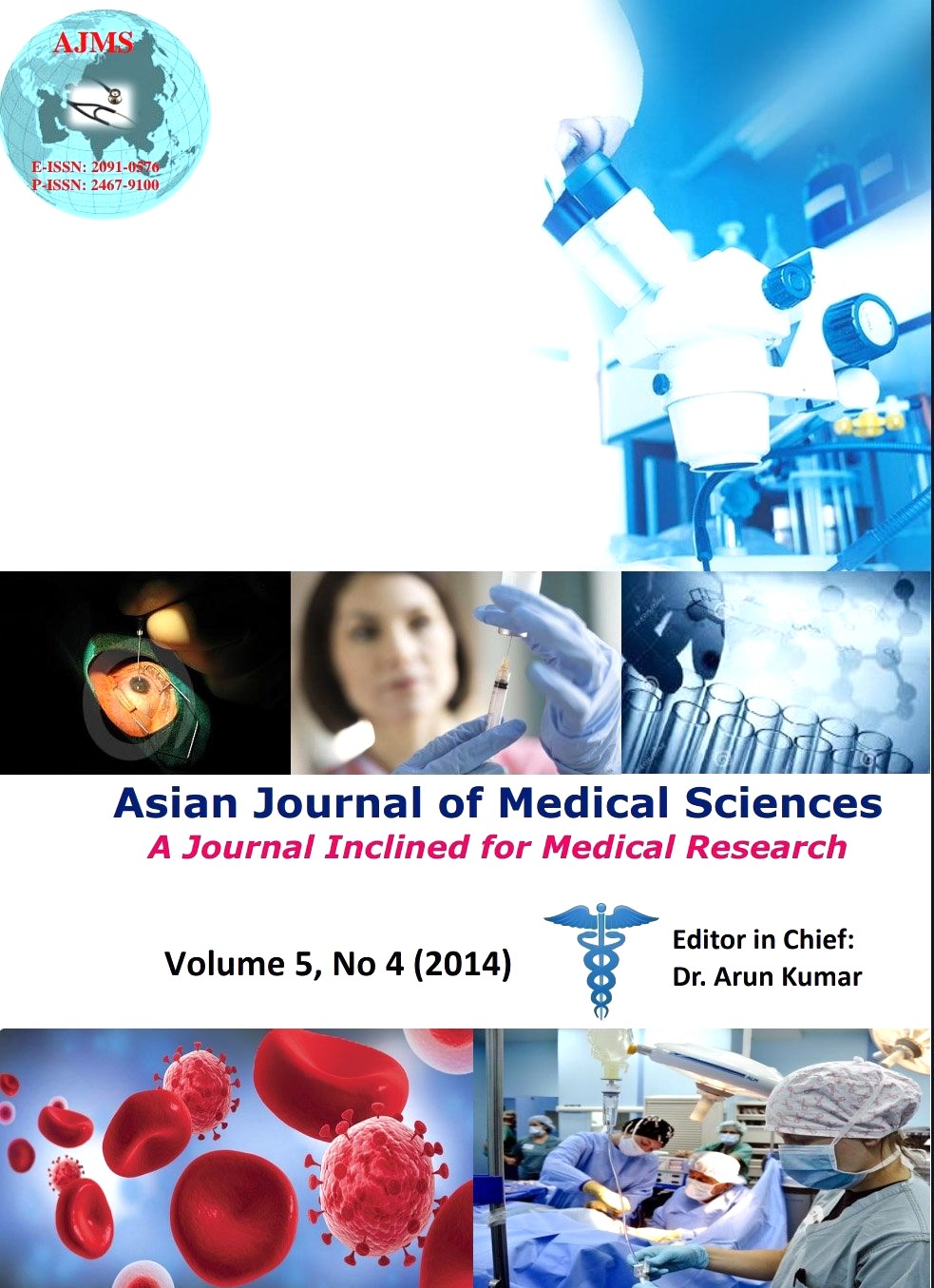Nasopharyngeal carcinoma, an analysis of histological subtypes and their association with EBV, a study of 100 cases of Pakistani population
Keywords:
Nasopharyngeal carcinoma, Keratinizing and non-keratinizing squamous cell carcinoma, Epstein barr virus, Latent membrane Protein-1Abstract
Introduction: Nasopharyngeal carcinoma is the most common nasopharyngeal malignancy. In recent decades, it has attracted world-wide attention because of complex interactions of genetic, viral, environmental and dietary risk factors, with an etiological association with the malignancy. Nasopharyngeal carcinoma (NPC) is a rare cancer throughout the world, with the exception of Southeast Asia, Southern China and North Africa. The Epstein-Barr virus (EBV) was discovered 38 years ago by electron microscopy of cells cultured from Burkitt’s lymphoma tissue by Epstein, Achong, and Barr. EBV infection is a common infection in Pakistan due to poor socioeconomic conditions but its association with Nasopharyngeal Carcinoma is yet to be firmly established in Pakistani population and there is scarce local data available.
Methods: A total of 100 consecutive cases of Nasopharyngeal Carcinoma, over a period of three years (2009-2011) were retrieved and reviewed from the pathology files at the Section of Histopathology, Aga khan University Hospital. Morphological sub classification of Nasopharyngeal carcinoma was done according to WHO. For the detection of EBV, LMP1 immunostain was used.
Results: Among total of 100 cases, the male to female ratio was 3:1, with an age range of 13-78 yrs and an average age of 42 yrs. Similar to other regions of world, Non-keratinizing Carcinoma (92%) is the commonest sub-type with a distinct bimodal age distribution, followed by Keratinizing Squamous Cell Carcinoma (8%) but there were no cases of Basaloid Squamous Cell Cacinoma. EBV-LMP 1 staining was demonstrated in 75/92 cases (81%), while all cases of Keratinizing Squamous Cell Carcinoma were negative for EBV-LMP 1 staining.
Conclusion: Prognostic impact of LMP-1 on Nasopharyngeal carcinoma is still unclear and also there are controversial studies regarding the prognostic effect of EBV on chemotherapy and radiotherapy, it is paramount that EBV positive and EBV negative patients be investigated for response to therapy to establish the importance of EBV association in nasopharyngeal carcinoma patients. The association with EBV is also very important because with ongoing research in the etiological basis of the tumors (associated with EBV) patients may also benefit from emerging immunotherapy used in these tumors.
DOI: http://dx.doi.org/10.3126/ajms.v5i4.9592
Asian Journal of Medical Sciences 2014 Vol.5(4); 16-20
Downloads
Downloads
Additional Files
Published
How to Cite
Issue
Section
License
Authors who publish with this journal agree to the following terms:
- The journal holds copyright and publishes the work under a Creative Commons CC-BY-NC license that permits use, distribution and reprduction in any medium, provided the original work is properly cited and is not used for commercial purposes. The journal should be recognised as the original publisher of this work.
- Authors are able to enter into separate, additional contractual arrangements for the non-exclusive distribution of the journal's published version of the work (e.g., post it to an institutional repository or publish it in a book), with an acknowledgement of its initial publication in this journal.
- Authors are permitted and encouraged to post their work online (e.g., in institutional repositories or on their website) prior to and during the submission process, as it can lead to productive exchanges, as well as earlier and greater citation of published work (See The Effect of Open Access).




